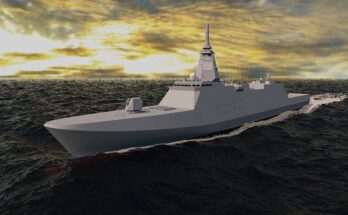
The U.S. Army has canceled its solicitation for an optionally manned fighting vehicle (OMFV) to replace the Bradley after only one company submitted a bid. The service was pursuing the program through a rapid prototyping mechanism with a very aggressive schedule, and General Dynamics Land Systems was the only contractor to offer a bid, which it submitted in October 2019. The company was pitching the Griffin III vehicle.
BAE Systems was planning to enter the competition with a version of the CV90 Mk IV, but the company dropped out of the program in June 2019. The company stated that the OMFV program did not align with the company’s current developmental priorities, and appeared to take issue with the aggressive schedule. BAE Systems is building the Army’s new AMPV and Marine Corps’ new Amphibious Combat Vehicle, and is in the running for the Army’s future Mobile Protected Firepower light tank. A team of Raytheon and Rheinmetall was disqualified from the OMFV program when it did not deliver a bid before the submission deadline.
In a statement, the Army said it will revisit program requirements, acquisition strategy, and schedule. It remains to be seen how big an impact this decision will have on the capabilities of the future Bradley replacement, including the service’s desire for unmanned and eventually autonomous capabilities.
Troubles with replacing the Bradley are nothing new for the Army. Prior to the OMFV, the service struggled for years to develop a new combat vehicle. An effort to develop a family of 20- to 30-ton manned ground vehicles under the now-defunct Future Combat Systems program was terminated in 2009. A follow-on ground combat vehicle effort was canceled in the FY15 budget due to affordability issues. The $30+ billion GCV aimed to procure 1,874 vehicles to replace a portion of the Bradley fleet. There were also concerns that the GCV concept had grown to some 70 tons, on par with an Abrams tank, which would limit vehicle mobility.
Shaun's deep-rooted interest in military equipment continues in his role as a senior defense analyst with a focus on the United States. He played an integral role in the development of Forecast International's U.S. Defense Budget Forecast, an interactive online product that tracks Pentagon acquisition programs throughout the congressional budget process. As editor of International Military Markets – North America, Shaun has cultivated a deep understanding of the vast defense markets in the United States and Canada. He is a regular contributor to Forecast International's Defense & Security Monitor blog and has co-authored white papers on global defense spending and various military programs.




